Dave Ulrich is the most prominent authority in the world of HR practitioners. Unfortunately many HR professionals like to follow some of his advice and ignore a very significant part of it.
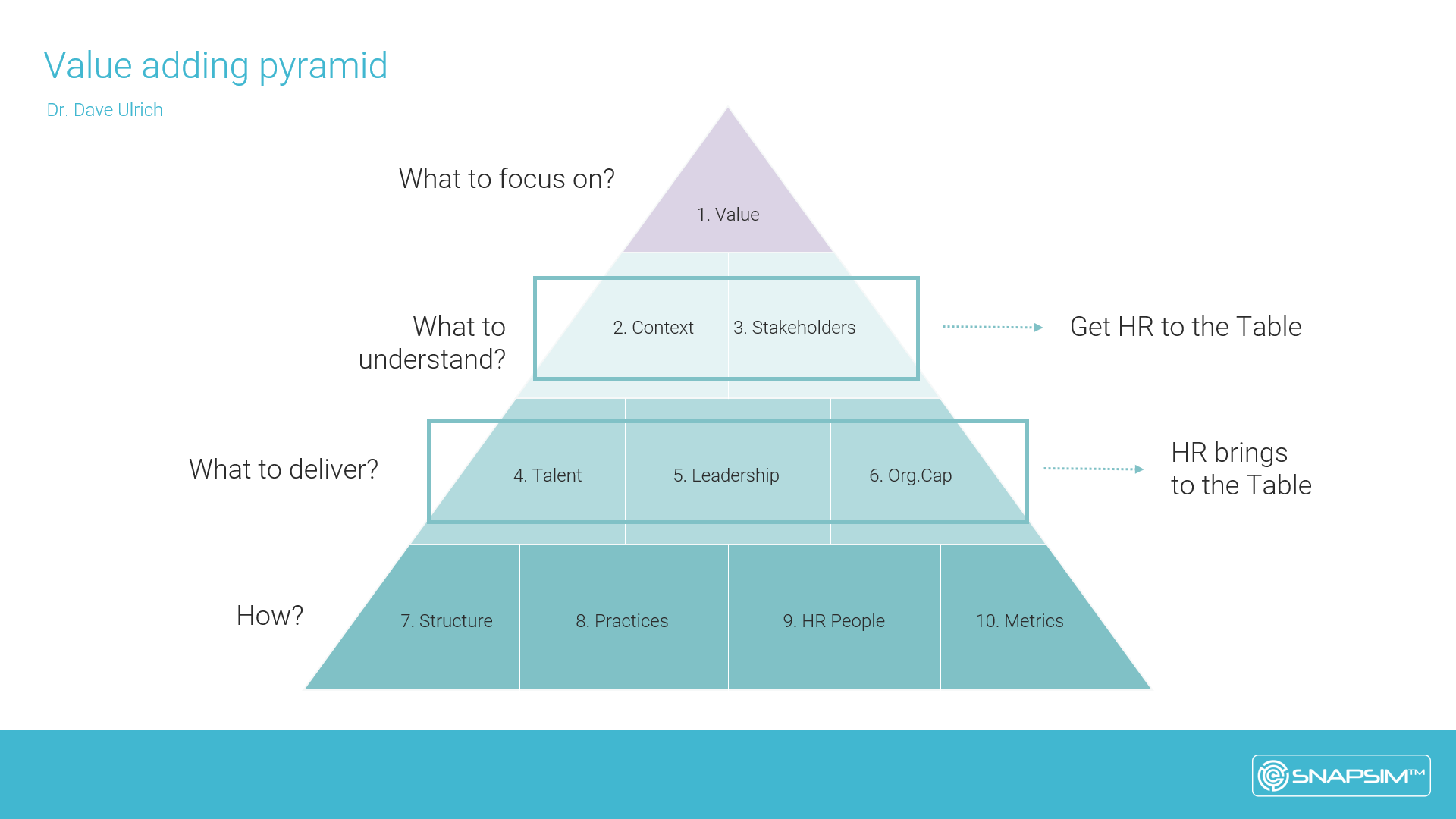
Back to basics
In his 1997(!) book "Human Resource Champions" Dave Ulrich notes the following:
- Human Resource Management is not about psychology, "positive climate" etc. HR professionals should work on METHODS and MODELS which support the company competitiveness.
- HR impact on the bottom line COULD and SHOULD be measured. HR should EVALUATE results of their own work.
- HR professionals should make employees more competent, not more happy.
- To achieve set goals, HR managers should forget all their traditional functions. Now is the time of actions not words, time to be PROACTIVE, not REACTIVE.
25 years after the book was written not much has changed. "Traditional" HR activities still take most of the busy schedules of HR professionals.But what should be doe by those who really want to add value to their organisations?
HR value pyramid
They should focus on HR value pyramid, developed by Dave Ulrich.
- On the lowest level of the pyramid there are tools and methods HR can use in adding value.
- That what's HR brings to the table. People with required competencies in the right place. That what's HR brings to the table.
- When delivering, HR should understand context of their organisations and understand interests of internal (managers, employees) and external (customer, investors, communities) stakeholders. The question to answer is - What to understand? HR who have all the answers can "have a seat at the table". In the context of Ulrich's book it means the right to discuss and make strategic decisions.
On other levels
The lowest level - the level of tools and methods - includes:
- HR strategy and HR processes
- HR practices
- HR competencies
- HR technologies and HR analytics
The second level presents key deliveries of HR function:
- talent development,
- leadership development,
- organisational capital.
The highest levels of the pyramid serve as the proof that "HR is not about people, HR is about business". And because of this, HR professionals should understand:
- context,
- stakeholders.
We will discuss the other elements of the HR value pyramid in more details in other articles.
Value of HR function
Value can be defined as the importance, worth, or usefulness of something. In economic terms value is is the ability of a product or a service to meet and exceed customer expectations. In other words, value should be considered by those who consume products and services. So value of HR function should be evaluated by internal clients.
Changing HR value
In Dave Ulrich model value is on the very top. The question HR professionals should answer is - What to focus on?
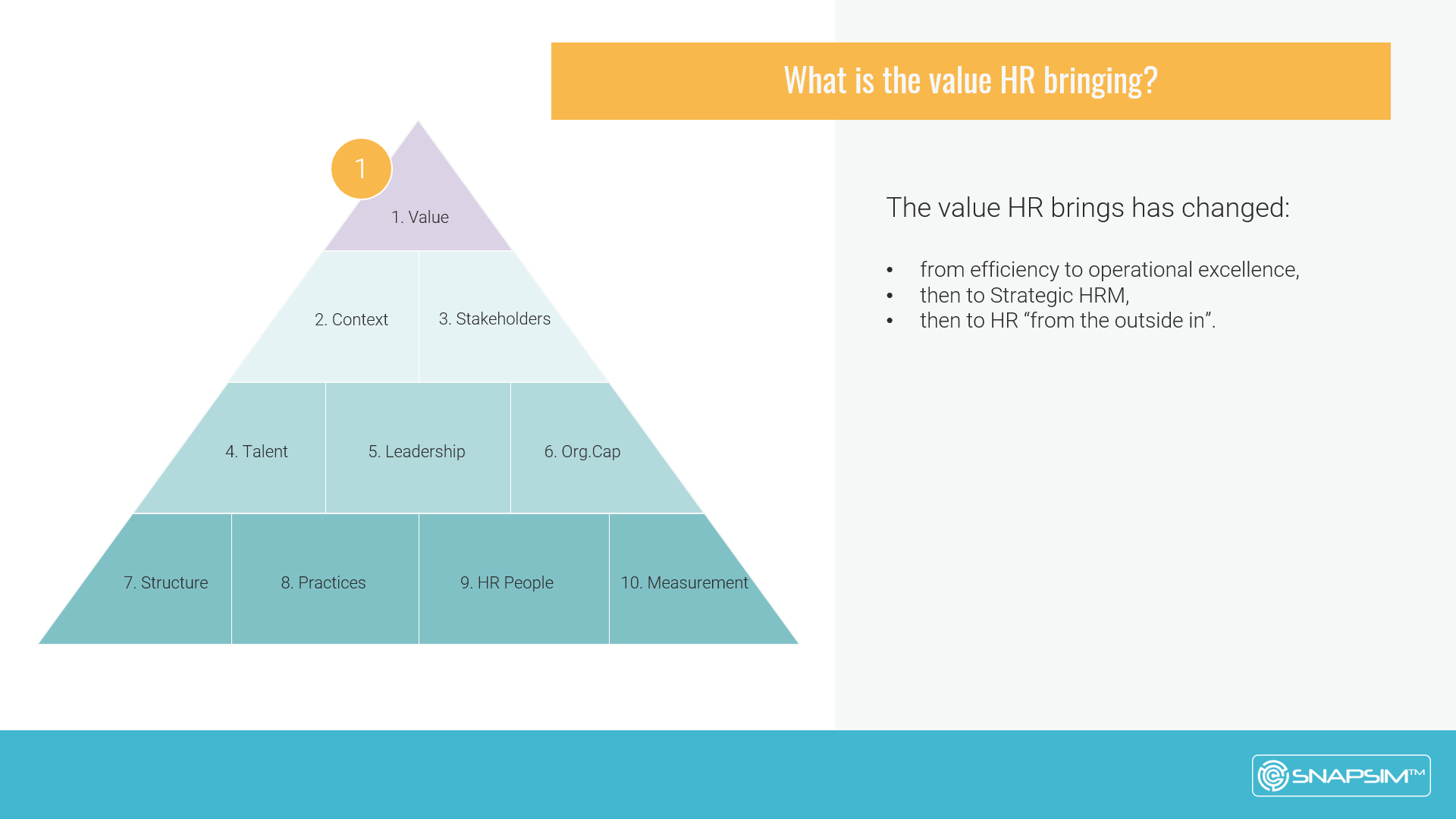
Ulrich notes that value HR brings change over time:
- from efficiency to
- operational excellence then to
- strategic HRM, then to
- HR “извне во внутрь” (выходя за границы компании).
Designing HR value
Delivering HR value requires answering the following questions:
- How can we support increase in profit while controlling costs?
- How to ensure employees have everything they need to make positive impact on the bottom line?
- What organisational structure should support increase in profit while controlling costs?
- How can HR support forming new relationships with new technologies?
Context of HR function
For more than 30 years Dave Ulrich tries to persuade HR professionals that "HR is not about people, HR is about business". But what does it mean?
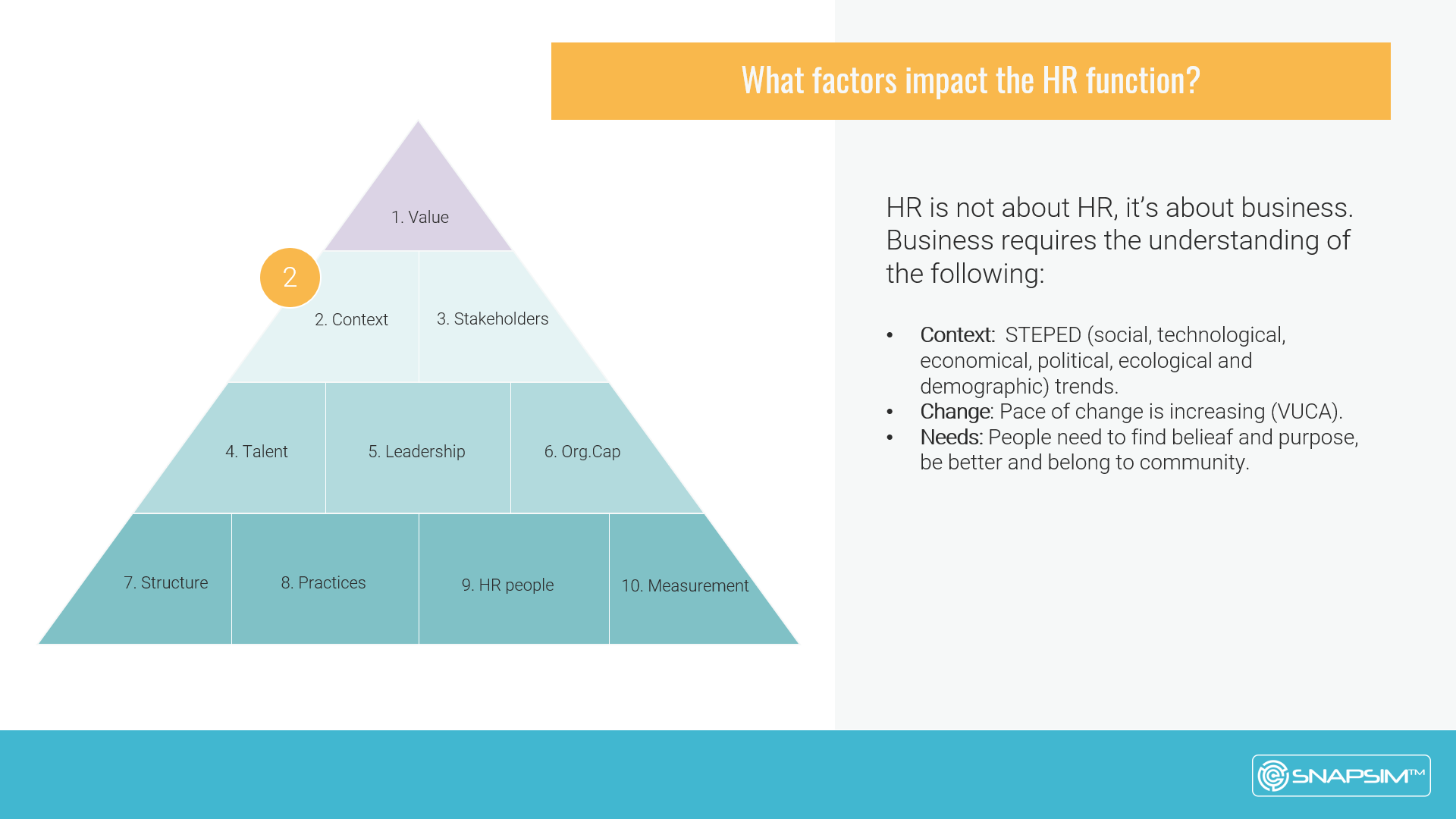
Understanding business
According to Ulrich, HR professionals should understand:
- Context: social, technological, economic, environmental, political, legal, and ethical (STEEPLE) external factors.
- Change: increasing speed of change that brings lack of stability, uncertainty and complexity.
- People requirements: people need to have purpose and goals, they want to belong and be a part of community.
Strategic Positioner
If we consider HR competencies , especially Strategic Positioner role, we can see that Ulrich defines this competence as an ability of HR professional to position their business.
Evaluating business environment:
- Understand social, technological, economic, environmental, political, legal, and ethical (STEEPLE) external factors.
- Understand, who makes decision in the organisation.
- Understand what clients need.
- Understand how the organisation makes money.
Evaluating stakeholders expectations:
- Understand investor expectations.
- How the organisation meets expectations of clients, stakeholders and employees.
- What investors think about your organisation.
- Help investors to determine leadership inside your organisation
Evaluating internal processes:
- Evaluating organisational risks.
- Contributing to developing organisational strategy (incl. developing a future vision).
- Identify strategy-related challenges.
Stakeholders
The HR stakeholders circle has evolved from internal (employees, line managers, organization) to external (customers, investors, community).
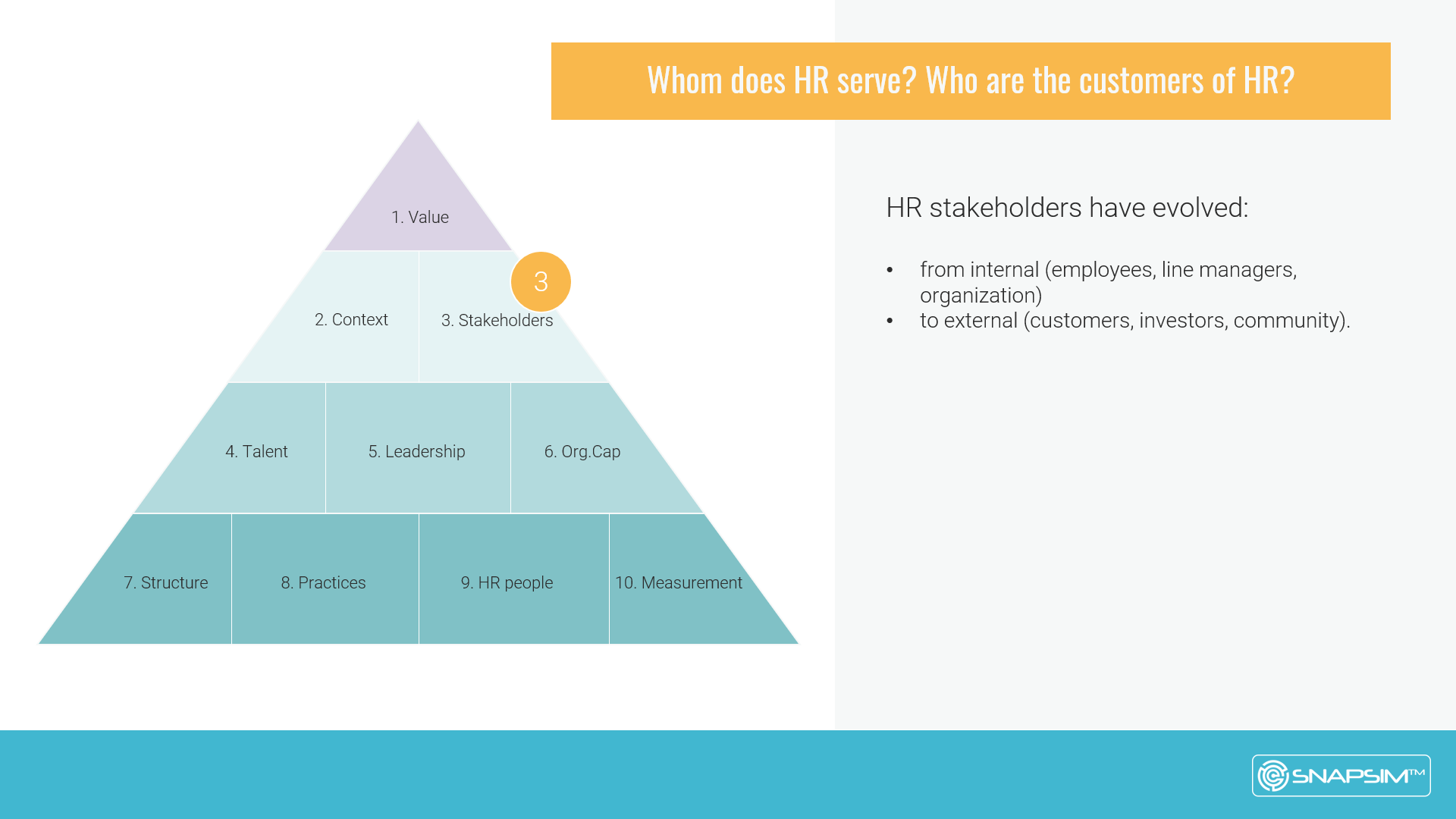
The engagement cycle
The engagement cycle in working with stakeholders is similar to what is used in consulting services. This cycle includes:
- analysis,
- diagnisis,
- preparing proposals,
- reaching agreement,
- project implementation,
- project evaluation.
Analysis stage
In the analysis stage HR professionals:
- interact with stakeholders,
- speak the language of the business,
- demonstrate business acumen and understand business needs,
- develop relationship within and outside of the prganisation,
- help people to exchange ideas and work in various functions,
- identify key stakeholder and manage them,
- influence people through common goals and objectives.
Diagnosis stage
In the diagnosis stage HR professionals:
- identify links between HR and business strategy,
- demonstrate understanding on how problems in business processes impact the HR function,
- identify potential problems for people and the organisation,
- use analytical skills,
- challenge vision and perception of their clients,
- identify external tendencies that impact business.
Preparing proposals stage
In the preparing proposals stage HR professionals:
- develop the change programme,
- identify critical business problems and obtain management support to solve them,
- develop structured recommendations,
- advice on financial consequences of possible decisions,
- identify roadblocks to change and strategies to overcome them,
- help stakeholders to learn lessons from actions taken.
Reaching agreement stage
In the stage of reaching agreement HR professionals:
- identify business outcomes and quantify benefits of proposed change,
- get approval for proposed results, timelines and resources,
- clarify expectations and outcomes,
- identify and attract people and resources for implementing projects.
Project implementation stage
In the project implementation stage HR professionals:
- provide agreed results,
- use project management techniques and methods,
- train others in project management,
- communicate to all stakeholders,
- identify and evaluate risks for stakeholders so they can further support change,
- manage their time to get things done,
- focus on positive outcomes.
Project evaluation stage
In the project evaluation stage stage HR professionals:
- set and control milestones,
- encourage continuous improvement, using milestones for evaluation,
- quantify value of their services to business, using financial and non-financial analysis,
- identify the synergy between change implementation programs,
- ensure lessons are learned by their organisation that are derived both from successes and failures.
Talent Management
In the second level of Dave Ulrich pyramid we find deliveries of HR function: talent, leadership, organisation capital.

What exactly is talent?
There are many definitions of the word talent. Come companies prefer to use their own as historically this word was used in a certain context. Let's start with the rather wide definition provided by CIPD:
- Talent refers to individuals who can make a significant difference to organisational performance. This may either be through their immediate contribution or, in the longer-term, by reaching their highest levels of potential.
- Talent management is the systematic attraction, identification, development, engagement, retention and deployment of those individuals who are of particular value to an organisation. This may be through their high potential or because they fulfil critical roles.
The main problem in talent management
Talent Management is a hot topic in HR (again). When companies consider their Talent Management practices, they are less focused on High-Potential Employees and more on HR practices such as:
- organisation potential,
- workforce planning and succession planning,
- individual performance and development.
The last point causes problems that prevent effective talent management initiatives. These problems can be formulated as follows...
The systems and processes used in most companies for Learning & Development don't provide links and don't consider:
- individual abilities,
- performance,
- learning efficiency.
The problem with corporate learning
The L&D process as part of the talent development process in most companies is similar to a losing racing horse nobody is happy with.
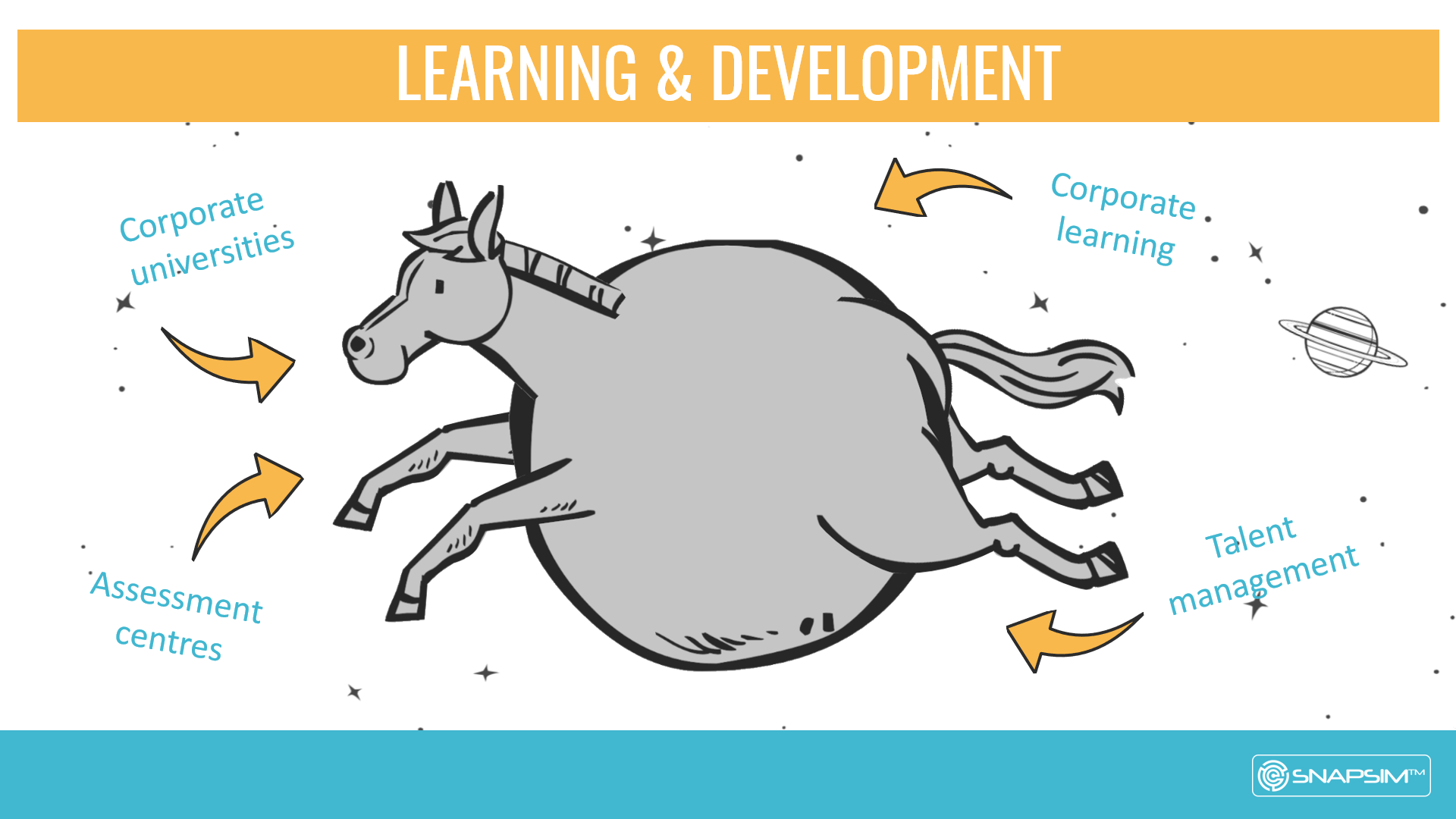
1.It has no link to strategy. It doesn't align strategic metrics to future skill-set your organisation requires, nor identifies gaps between current and future knowledge and skillsets.
2.It is reactive. Even the best practice dictates that learning should be considered after performance reviews that should (theoretically) identify what prevented employee X to demonstrate their best performance to assign courses or other forms of learning. No link to what is planned for the future.
3.Very few companies use standards when they develop training programmes for managers, HR and other areas that are not in the category of compliance training.
4. Very few companies measure effectiveness of learning. It's a very simple process: all they need to do is to arrange entry tests and (after a week/month/3 months of the course completion) final tests to evaluate progress in knowledge acquisition.
One of the main reasons HR professionals don't do it, because otherwise it would be obvious that about 90% of training budget is wasted.
5.Usually there is no system in place to evaluate how what was learned is applied on the jobs. The simplest way to do it is to work with line managers, but HR professionals are reluctant to do so.
6. L&D process is not linked to personal abilities of employees. Some HR professionals love to be certified in certain assessment methodologies. Almost all of them are not valid.
Out of assessment methodologies used commercially, the only one proven statistically and valid is the methodology of Frank L. Schmidt and John E. Hunter which proves correlation between GMA and Job Performance Rating. Every other flavour of the day assessment methodologies are not valid.
By the way, the validity of Emotional Intelligence approach (per Daniel Goleman) is also not proven. It is different from the initial research conducted by Howard Gardner.
So there is no connection between L&D process and business results - KPIs, costs or profit, because traditional LMS (Learning Management Systems), employee portals, etc are not designed to measure increase in competencies gained through learning and development as well as residual knowledge and other characteristics important to establish these links.
